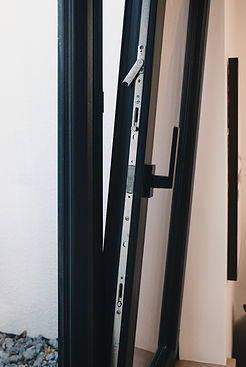
Elegant European Windows & Doors for Your Home
Windows crafted with the latest-generation WINDOW HUB profile systems offer more than just sleek, modern looks. These European windows are engineered with precision — every detail of the profile geometry is designed to meet and exceed today’s most demanding technical standards.
Whether you're focused on energy efficiency, sound insulation, or long-term durability, WINDOW HUB’s advanced designs deliver exceptional performance tailored to the needs of American homes and climates.
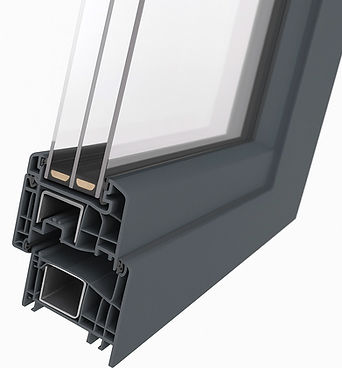
S8000 European Windows
Designed with both performance and practicality in mind, this 74 mm rebate gasket system offers a smart, cost-effective solution for modern window manufacturing. By optimizing material use and simplifying fabrication, WINDOW HUB makes it easier for fabricators to deliver high-quality, energy-efficient European windows that meet the needs of American homeowners and builders alike. It's a streamlined system that doesn’t compromise on durability or performance — just smart engineering that works.
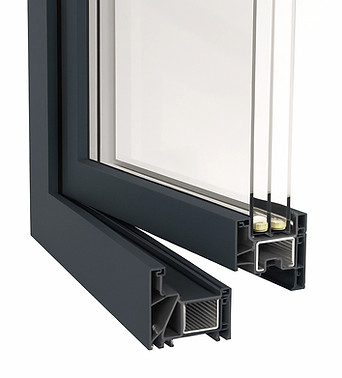
LINEAR European Windows
The clean, angular design of the LINEAR® system reflects a timeless aesthetic that aligns perfectly with contemporary architectural trends. In today’s modern U.S. homes, straight edges and minimalist lines are increasingly favored, especially in new builds. European windows like LINEAR® offer that refined, streamlined look—ideal for creating open, seamless facades that blend natural light with architectural simplicity.

European window cost
The website presents european windows of various configurations in terms of color, glazing and functional purpose — examples include open sash units, fixed panes, tilt-enabled sashes (activPilot series), micro-vent variants, and models with hidden hinges. Each listing states a glass specification “15/16” and glazing id “1-LowE 272 -AR,” plus clear width × height dimensions.
Practical observations from the catalogue: white-frame fixed triple-glass units and white activPilot tilt units are shown alongside black and black LINEAR finishes. Price samples on the page range across many SKUs (for example, a white triple glazing sample at $654.09 and a compact white tilt activPilot at $307.97). These concrete listings make it easier to compare like-for-like options.
Double and Triple-Glazed European Windows
Modern glazing technology in today’s windows does more than just keep your home warm—it also helps block out unwanted noise. This combination of thermal insulation and sound reduction creates a more comfortable environment for both relaxing and getting work done. For added safety, security glass options are available to enhance protection. Plus, a wide selection of decorative glass designs adds a stylish, personalized touch to any space.
Double-Glazing
Double-glazing is the gold standard for modern European windows. It features two panes of glass separated by a sealed space filled with argon gas—an insulator that outperforms regular air. This advanced setup offers excellent thermal performance, helping your home retain heat more efficiently and cutting down on energy costs. Plus, it significantly reduces outside noise, creating a quieter, more comfortable indoor environment.

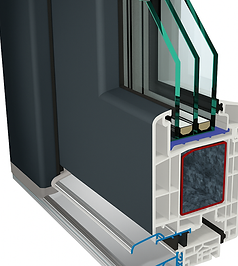
Triple-Glazing
Triple-glazing is the go-to choice for homeowners who want maximum energy efficiency. Common in high-performance European windows, this design adds a third pane of glass, creating an extra insulating layer filled with inert gas. The result? Even greater heat retention, better indoor comfort year-round, and improved soundproofing to keep outside noise where it belongs.
Key Engineering Features of European Windows
European tilt-and-turn windows are designed for energy efficiency and structural integrity. The multi-chambered uPVC frame minimizes thermal bridging and enhances rigidity.
Their dual-function hardware enables both inward tilt for ventilation and full inward swing for cleaning. Steel-reinforced hinges support heavy double- or triple-glazed sashes, ensuring long-term durability.
Multi-point locking systems along the sash perimeter provide secure closure and uniform pressure on the seals. Glazing options include argon-filled IGUs with warm-edge spacers for superior insulation and condensation control.
These features combine to deliver airtightness, ease of use, and reliable performance in demanding climates.

European Windows
European Windows in US Homes
The use of European windows in US homes is expanding as homeowners seek energy efficiency and refined aesthetics. Builders and renovation specialists frequently install them in luxury builds and custom eco-friendly projects.
Adaptations made for American installations:
-
Sizing adjusted for inch-based construction
-
Custom nailing fins or flange systems
-
Compatibility with standard drywall returns and sills
These adaptations have allowed European style windows to integrate seamlessly into American building practices.
Accessories for European windows and doors
Integrated Blind Systems for Functional European Windows
European tilt and turn windows require blinds that won’t block their inward opening motion. Standard blinds can interfere with ventilation or cleaning modes, so specialized solutions are used. Popular options include blinds mounted within the glazing unit or fitted close to the sash with magnetic or side-track systems to stay secure when the window is tilted. These systems maintain full window function while providing light control, privacy, and thermal efficiency. Motorized blinds or discreet manual options offer added convenience, especially in tight spaces or larger units.



External Screens for European Windows
External screens are essential for European tilt and turn windows, which open inward. Since internal screens block window operation, these are mounted outside the frame. They allow full use of tilt, turn, and micro-ventilation modes.
Constructed with uPVC or aluminum frames and fine mesh, they provide insect protection without restricting airflow. Available in fixed or retractable models, they’re custom-fitted to match specific window profiles and include secure mounting systems for stability.
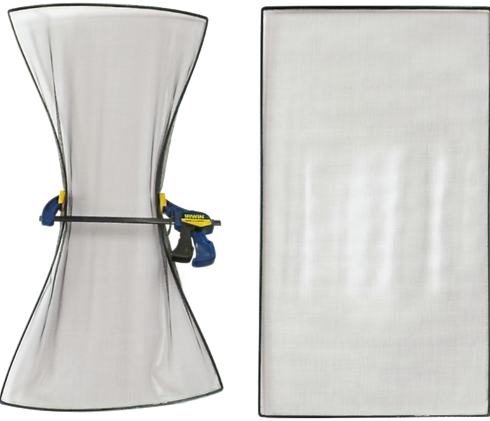
.png)

